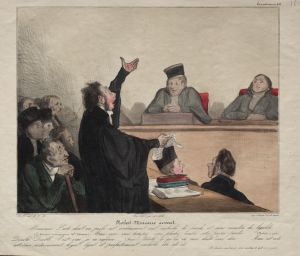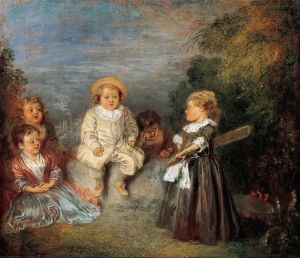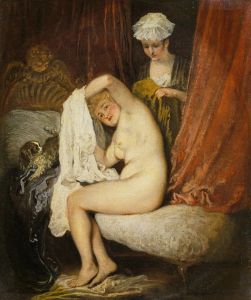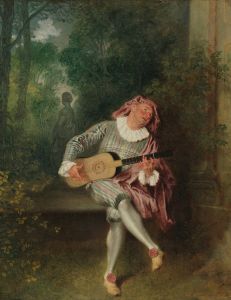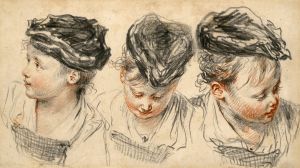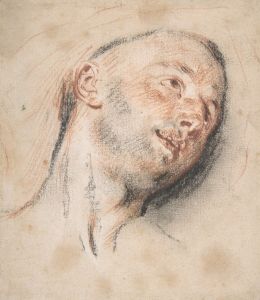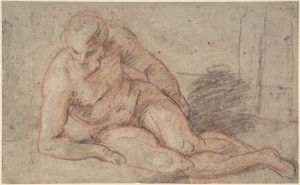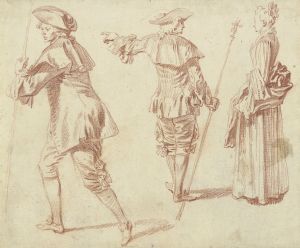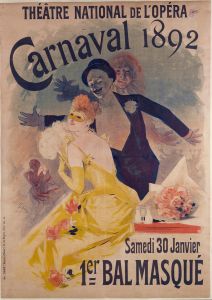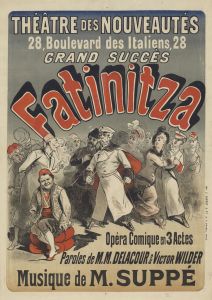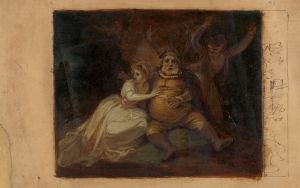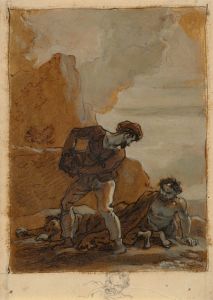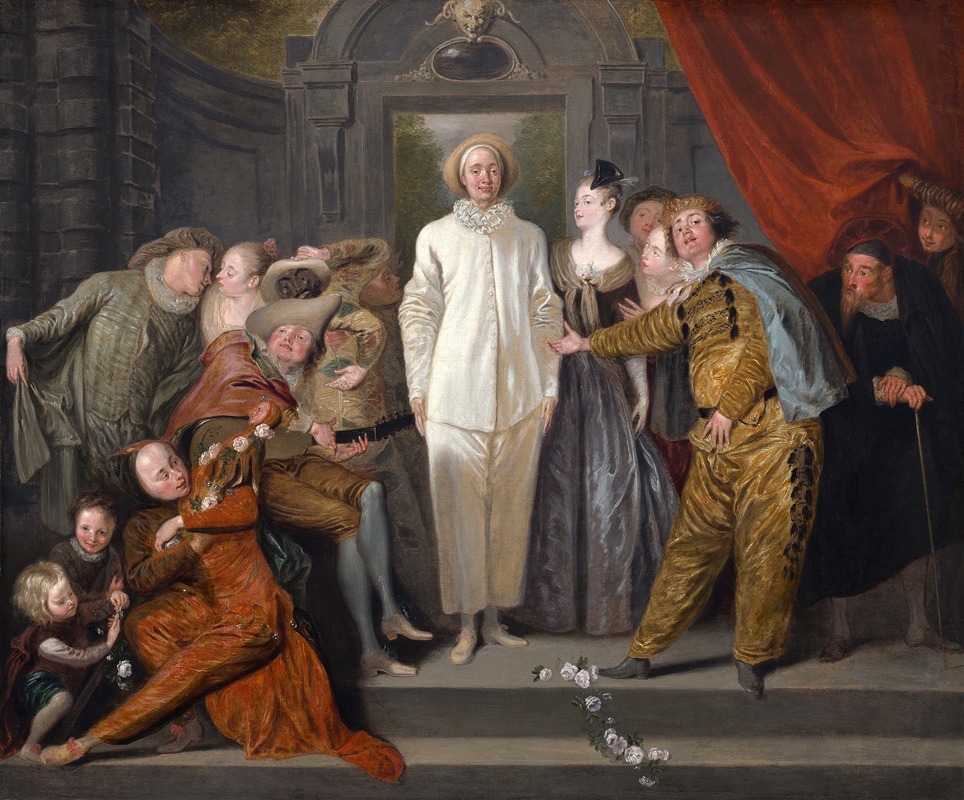
The Italian Comedians
A hand-painted replica of Jean-Antoine Watteau’s masterpiece The Italian Comedians, meticulously crafted by professional artists to capture the true essence of the original. Each piece is created with museum-quality canvas and rare mineral pigments, carefully painted by experienced artists with delicate brushstrokes and rich, layered colors to perfectly recreate the texture of the original artwork. Unlike machine-printed reproductions, this hand-painted version brings the painting to life, infused with the artist’s emotions and skill in every stroke. Whether for personal collection or home decoration, it instantly elevates the artistic atmosphere of any space.
The Italian Comedians is an oil painting by the French Rococo artist Jean-Antoine Watteau, created around 1720. Watteau is renowned for his depictions of fêtes galantes—elegant outdoor gatherings of aristocratic figures—and his works often reflect themes of theater, music, and performance. This painting is a notable example of his fascination with theatrical subjects, particularly the commedia dell'arte, a form of Italian improvisational theater that was highly popular in Europe during the 17th and 18th centuries.
The composition of The Italian Comedians centers on a group of actors dressed in theatrical costumes, posed as if on a stage. The figures are arranged in a dynamic and somewhat informal manner, capturing a moment of interaction and performance. At the center of the scene is the character Pierrot, a recurring figure in Watteau's work, dressed in his iconic white costume. Pierrot's expression is melancholic and introspective, contrasting with the more animated gestures of the surrounding characters. This juxtaposition highlights Watteau's ability to convey subtle emotional nuances within a single composition.
The painting reflects Watteau's mastery of color and light, with soft, luminous tones that enhance the dreamlike quality of the scene. The figures are set against a loosely defined background, which suggests an outdoor setting but remains deliberately ambiguous, allowing the focus to remain on the performers. Watteau's brushwork is delicate and fluid, contributing to the overall sense of movement and spontaneity.
The Italian Comedians is often interpreted as a celebration of the theatrical arts, as well as a reflection on the human condition. The commedia dell'arte characters, with their exaggerated costumes and gestures, serve as both entertainers and symbols of deeper emotional truths. Watteau's interest in theater and performance was likely influenced by the cultural milieu of early 18th-century France, where the commedia dell'arte and other forms of theatrical entertainment enjoyed widespread popularity.
The painting is currently housed in the National Gallery of Art in Washington, D.C., where it remains a significant example of Watteau's artistic legacy. It continues to be admired for its technical brilliance, its evocative portrayal of theatrical life, and its ability to capture the complexities of human emotion within a single, harmonious composition.






